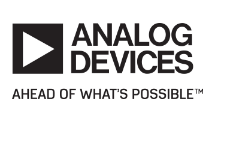Analog Devices (ADI) has announced an update to its RadioVerse technology and design ecosystem, which is intended to simplify and accelerate radio development for wireless carriers and telecom equipment manufacturers as they transition cellular base stations from 4G to 5G technology.
ADI's expanded RadioVerse portfolio features new radio transceiver hardware, software tools and a robust design environment designed to enable the more compact and lower power radios required for next generation networks. The new solution allows customers to evaluate and develop radio designs for 4G small cell and Pre-5G massive MIMO systems, which will be key elements in the transition to 5G.
Supporting radio design across the circuit, architecture, system and software levels, the updated RadioVerse release includes the AD9375 RF transceiver, the latest addition to ADI's integrated wideband RF transceiver series. The AD9375 device is claimed to be the first RF transceiver to incorporate digital pre-distortion (DPD) algorithm on-chip to help reduce DPD power consumption by up to a claimed 90% versus competing solutions.
ADI stated that re-partitioning the DPD system from the FPGA to the transceiver reduces the number of JESD204B serial data interface lanes by half, resulting in a significant power saving, particularly as the number of antennas per base station increases from two to 128 in support of Pre-5G massive MIMO radio-channel density requirements.
Further benefits of the new design include a more compact radio circuit layout enabling simplified routing and system design, reduced base station size and allowing the use of lower-cost, less complex FGPAs. Applied to small cells, these advantages can allow more frequency bands per cell for higher network capacity.
 ADI's AD9375 transceiver allows a common radio platform design that is tunable over a range of 300 MHz to 6 GHz, operates on a 6 Gbit/s JESD204B interface and consumes less than 5 Watts. As with the AD9371 product, the AD9375 features two 100 MHz receivers, two 250-MHz transmitters, a two-input observation receiver and a three-input sniffer receiver. In addition, integrated DPD can support 3G and 4G waveforms with instantaneous signal bandwidth up to 40 MHz.
ADI's AD9375 transceiver allows a common radio platform design that is tunable over a range of 300 MHz to 6 GHz, operates on a 6 Gbit/s JESD204B interface and consumes less than 5 Watts. As with the AD9371 product, the AD9375 features two 100 MHz receivers, two 250-MHz transmitters, a two-input observation receiver and a three-input sniffer receiver. In addition, integrated DPD can support 3G and 4G waveforms with instantaneous signal bandwidth up to 40 MHz.In addition to the AD9375, the RadioVerse transceiver hardware portfolio features wideband devices for base station architectures ranging from macro- to pico- and femto-cell form factors, in addition to ultra-low power, narrowband transceivers targeting industrial Internet of Things applications.
ADI noted that it is continuing to expand RadioVerse through partnerships with power amplifier (PA) suppliers including NXP Semiconductors and Skyworks Solutions.









